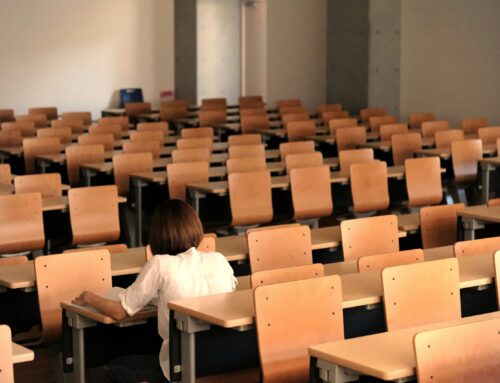 We have covered a few different educational paths for children—microschools, homeschooling, etc. However, these usually centered on complete structural changes to the way children are taught. Though, year-round schooling mostly affects the pacing and schedule of learning. Year-round schooling, also known as a “balanced calendar,” refers to the distribution of the typical 180 school days being spread out evenly over a 12-month period as opposed to the more popular 9-month schedule. Whereas other forms may integrate/mix and match curriculums, year-round schooling focuses on ensuring that there is little learning loss. But what are the benefits of year-round schooling? And are there identifiable drawbacks?
We have covered a few different educational paths for children—microschools, homeschooling, etc. However, these usually centered on complete structural changes to the way children are taught. Though, year-round schooling mostly affects the pacing and schedule of learning. Year-round schooling, also known as a “balanced calendar,” refers to the distribution of the typical 180 school days being spread out evenly over a 12-month period as opposed to the more popular 9-month schedule. Whereas other forms may integrate/mix and match curriculums, year-round schooling focuses on ensuring that there is little learning loss. But what are the benefits of year-round schooling? And are there identifiable drawbacks?
First, let’s look at the original purpose of year-round schooling. Its initial reintroduction in the 70s was done to accommodate “…students on different tracks with staggered vacations [so] administrators could expand the capacity of existing school buildings.”[1] In other words, it was used to ensure that growing numbers of students would have sufficient staff and support throughout their time in school. Different groups would be on different schedules as a result, which ensured that there would always be an adequate ratio of student to teacher. More recently, in the hopes of mitigating some of the learning loss that occurred in 2020 due to the pandemic, “a few states and districts [looked to] balanced calendars as a way to combat [it].”[1] This has since gained some popularity, mostly in the western and southern United States.
What are the benefits of year-round schooling?
One major benefit that most articles/pieces of research have claimed and evaluated is the reduction in learning loss. Without the prolonged three-month break in the summer, teachers don’t have to spend a substantial amount of time reviewing what children learned the previous year before building upon that content. Students tend to retain information better when it is continuously reinforced, which is why summer breaks usually pose such a problem. Students are having fun during a well-deserved break, but little if any academic review is happening. Year-round schooling seems to solve this issue as the almost 12 weeks of vacation time are broken into smaller, manageable breaks.
Building upon knowledge retention, an increase in academic achievement is also associated with year-round schooling. A study by the National Library of Medicine found this to be true in particular with low-income students.[2] This is in part due to continuous access to school resources that year-round school permits. Many low-income students depend on school-provided meals as well as many types of materials for learning that ease their ability to learn, allowing them to remain focused on their academic success. The consistency and positivity that comes from having a consistent, structured environment helps to decrease the effects of an unstable home environment for students.[3] These positives can take the form of having present positive role models and trusted adults, having an additional warm meal, or even simply having shelter for a portion of their day.
Furthermore, there are benefits for a child’s various relationships, as well. The consistent year-round child care that school would provide can help working families succeed.[4] Not having to worry about finding a program or individual to watch your child for the summer is both a financial advantage and stress reliever for parents. Parents then are able to spend some of the time they no longer need to rest to bond with their child, or use the money saved to give them new experiences, like a museum trip. Additionally, year-round schools can allow for stronger relationships between peers and educators due to the more frequent stable interactions. These attachments are crucial for student learning and behavior.
What are some of the drawbacks?
Contrastingly, This separate study found that year-round schooling does not provide substantial benefits over the typical 9-month schedule. In fact, it found that it could be detrimental to the community at large “that depend[s] on summer vacation to bring them customers and employees.”[5] Students who are of age and could be looking towards gaining real-world experience, such as a summer job, would be at a disadvantage with this type of schedule. Other enriching activities like sleep-away camps, summer camps, and even sport clubs may not be possible to enroll in. [4]
Another debatable aspect of year-round schooling is childcare. For many parents, the absence of a prolonged 3-month summer break is a relief; they don’t have to worry about securing long-term childcare that is oftentimes expensive. On the flip side, the redistributed breaks that come with balanced schedules may not line up with natural yearly breaks for parents, which they may not be able to account for.[1] Having to find last-minute childcare in the middle of a month like October, where there’s typically no holiday breaks and most after school and childcare centers may be at capacity, is an issue.
Last but not least, there is a higher chance of burnout for both students and educators with the lack of longer breaks.[6] Teachers may be stretched too thin if they are teaching different tracks at once. Proper staffing isn’t the only issue either from the school’s perspective, as it is extremely costly to transition to a year-round schedule.[4] Something similar can be said for students. Not having those extended breaks means there’s no “end in sight” to the workload.
Regardless of these challenges, year-round school continues to gain traction among parents. Observably, it is a choice for many that perfectly aligns with their standards of education and needs of their family. This growth in interest is expected given how other forms of schooling are also gaining popularity as more parents become dissatisfied with the traditional school system and the changes in effect.
PSG
Publishing Solutions Group is committed to meeting the needs of our clients. By understanding and keeping ourselves informed about education trends like year-round schooling, we are able to create products and polish content that keep us at the forefront of innovation.
[1] https://www.usnews.com/education/k12/articles/the-pros-and-cons-of-year-round-school-calendars
[2] https://pmc.ncbi.nlm.nih.gov/articles/PMC6922050/
[3] https://ace.edu/blog/the-pros-cons-of-year-round-school/
[4] https://www.parents.com/year-round-schooling-schedule-pros-cons-8661943
[5] https://papers.ssrn.com/sol3/papers.cfm?abstract_id=2766106
[6] https://www.care.com/c/the-pros-and-cons-of-year-round-school/
Image free to use under the Unsplash License.




